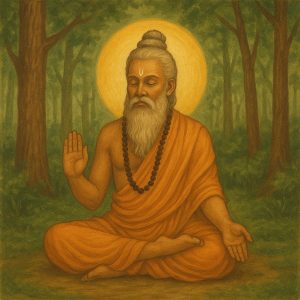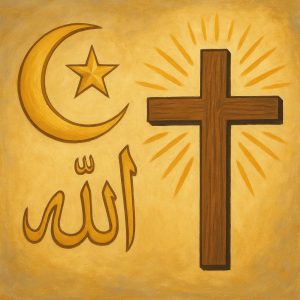The One With Different Forms: My Perspective
The Emergence of Deities and Spirituality in India
The One India is a land of vast diversity—geographically, culturally, and spiritually. Over centuries, as different communities settled near rivers, forests, and plains, their way of life naturally adapted to their surroundings. This included not only their food, clothing, and language, but also their rituals, practices, and spiritual beliefs.
Firstly, Human beings, facing life’s uncertainties and difficulties, naturally looked for someone or something higher to surrender to—a divine power that could offer protection, guidance, and hope. This led to the emergence of deities, allowing people to connect with the unseen forces through forms they could understand and relate to. Early on, fundamental forces like the Sun (Surya), Moon (Chandra), Wind (Vayu), and Rain (Indra) were worshipped because of their direct impact on human survival and prosperity.
The Role of Gurus and the Spread of Traditions

Secondly, because India is such a vast and geographically diverse land, communities developed in relative isolation, with limited communication between them. In each region, people evolved their own ways of worship, giving rise to different local deities and practices.
Gurus—wise, educated, and spiritually enlightened individuals—emerged as natural leaders. People would gather around such teachers, accepting their insights and adopting the processes and rituals they established for worship. Over generations, these systems matured into deeply rooted traditions, temples, festivals, and schools of spiritual thought. Thus, variety became the natural feature of Indian spirituality, yet all traditions pointed toward the same ultimate truth.
The One : Many Forms, One Essence
In brief, Hinduism, there is a profound understanding that many deities are simply different forms of the same One Supreme Reality. Each deity highlights a unique aspect of the infinite divine—be it power, wisdom, compassion, or protection.
Next, people of different mentalities and emotional needs can choose a deity that resonates with them. Some may find peace in Shiva’s detachment, others in Krishna’s loving playfulness, while some are drawn to Durga’s fierce protection. Each of these forms serves as a bridge to the One. No matter which deity one follows, the journey ultimately leads back to the same source.
Still, this flexibility allows every individual to connect with the divine according to their nature, encouraging a deeply personal and meaningful spiritual experience.
The One : Why Do We Pray to God?
Definitely, prayer in Hinduism is not about fear or blind obedience. It is a means to keep the mind calm, balanced, and sane amidst the chaos of life. Through prayer, one strengthens their inner self, finds peace, and aligns with higher truths.
In fact, Hinduism offers many different processes to reach this inner peace—whether through meditation (dhyana), devotion (bhakti), selfless work (karma), or wisdom (jnana). Each path leads the seeker inward, to discover that true peace is already within them. Thus, in the Indian tradition, prayer is not just communication with the divine outside but a journey to realize the divine within.
The One : The Contrast with Abrahamic Faiths

Unlike Hinduism, Abrahamic religions such as Christianity and Islam emphasize One God and One True Path. In Christianity, salvation depends on accepting Jesus Christ as the Son of God. In Islam, submission to Allah and recognition of Muhammad as the final prophet are essential for attaining paradise.
Both these faiths tend to view other religious paths as incomplete or incorrect, leading to historical efforts of conversion, conflict, and suppression of other beliefs. While many individual followers are peaceful and loving, the theological structures leave little room for accepting multiple paths to the divine.
In contrast, Hindu thought teaches that all sincere paths lead to the One. No single approach is considered the only way. This has helped India maintain spiritual diversity and religious tolerance for thousands of years.
Indian Spirituality: Embracing Diversity
The Indian spiritual vision, expressed beautifully in ancient texts, is inclusive and universal. The Rig Veda declares:
“Ekam sat vipra bahudha vadanti”
(The Truth is One, but the wise call it by many names.)
The Bhagavad Gita says:
“In whatever way they approach Me, I accept them. All paths lead to Me.”
(Bhagavad Gita 4.11)
These teachings remind us that different forms, names, and practices are simply various roads leading to the same Divine Reality. Whether one prays to Shiva, Vishnu, Devi, or a village deity, the destination is always the One.
Conclusion: Many Names, One Source
At the heart of Indian spirituality lies the understanding that there is only One, experienced and celebrated in countless ways. Deities are not separate gods, but different windows into the same infinite sky. Each soul, through their devotion and seeking, is simply finding their own way home.
Thus, the many forms, rituals, and names are not signs of division—they are expressions of love, freedom, and unity. In a world often torn apart by rigid dogmas, this perspective offers a timeless message of peace, respect, and spiritual brotherhood.
Also read my other writing on MENU OF GODS if you find this interesting

